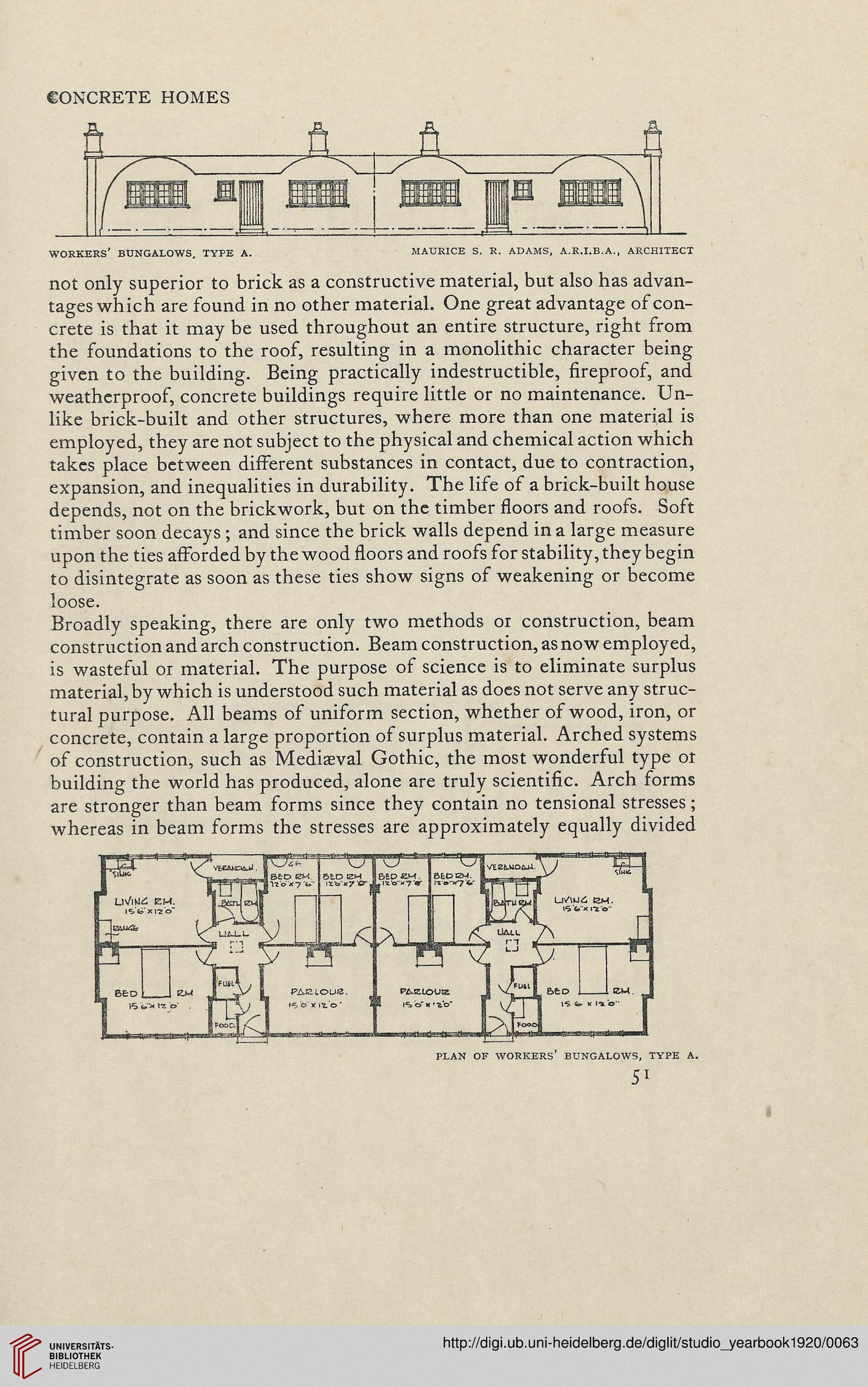CONCRETE HOMES
not only superior to brick as a constructive material, but also has advan-
tages which are found in no other material. One great advantage of con-
crete is that it may be used throughout an entire structure, right from
the foundations to the roof, resulting in a monolithic character being
given to the building. Being practically indestructible, fireproof, and
weatherproof, concrete buildings require little or no maintenance. Un-
like brick-built and other structures, where more than one material is
employed, they are not subject to the physical and chemical action which
takes place between different substances in contact, due to contraction,
expansion, and inequalities in durability. The life of a brick-built house
depends, not on the brickwork, but on the timber floors and roofs. Soft
timber soon decays ; and since the brick walls depend in a large measure
upon the ties afforded by the wood floors and roofs for stability, they begin
to disintegrate as soon as these ties show signs of weakening or become
loose.
Broadly speaking, there are only two methods or construction, beam
construction and arch construction. Beam construction, as now employed,
is wasteful or material. The purpose of science is to eliminate surplus
material, by which is understood such material as does not serve any struc-
tural purpose. All beams of uniform section, whether of wood, iron, or
concrete, contain a large proportion of surplus material. Arched systems
of construction, such as Mediaeval Gothic, the most wonderful type ot
building the world has produced, alone are truly scientific. Arch forms
are stronger than beam forms since they contain no tensional stresses;
whereas in beam forms the stresses are approximately equally divided
PLAN OF WORKERS’ BUNGALOWS, TYPE A.
51
not only superior to brick as a constructive material, but also has advan-
tages which are found in no other material. One great advantage of con-
crete is that it may be used throughout an entire structure, right from
the foundations to the roof, resulting in a monolithic character being
given to the building. Being practically indestructible, fireproof, and
weatherproof, concrete buildings require little or no maintenance. Un-
like brick-built and other structures, where more than one material is
employed, they are not subject to the physical and chemical action which
takes place between different substances in contact, due to contraction,
expansion, and inequalities in durability. The life of a brick-built house
depends, not on the brickwork, but on the timber floors and roofs. Soft
timber soon decays ; and since the brick walls depend in a large measure
upon the ties afforded by the wood floors and roofs for stability, they begin
to disintegrate as soon as these ties show signs of weakening or become
loose.
Broadly speaking, there are only two methods or construction, beam
construction and arch construction. Beam construction, as now employed,
is wasteful or material. The purpose of science is to eliminate surplus
material, by which is understood such material as does not serve any struc-
tural purpose. All beams of uniform section, whether of wood, iron, or
concrete, contain a large proportion of surplus material. Arched systems
of construction, such as Mediaeval Gothic, the most wonderful type ot
building the world has produced, alone are truly scientific. Arch forms
are stronger than beam forms since they contain no tensional stresses;
whereas in beam forms the stresses are approximately equally divided
PLAN OF WORKERS’ BUNGALOWS, TYPE A.
51




